Numerical Investigation on a Axial Slot Casing Treatment of a Large Circumferential Interval and Small Opening Area
Abstract
:1. Introduction
2. Numerical Simulation Methods and Validation
2.1. Test Model
2.2. Simulation Methods
2.3. Validation of Simulation Results
3. Results and Discussions
3.1. The Influence of Axial Slots Area
3.1.1. The Influence on Compressor Characteristic Curve
3.1.2. Analysis of Frequency Characteristics of Blade Tip Flow Field
3.1.3. Analysis of Frequency Characteristics of the Blade Tip Flow Field
3.2. The Influence of Axial Slots Circumferential Interval
3.2.1. The Influence on Compressor Characteristic Curves
3.2.2. Analysis of Unsteady Tip Flow Field Details
4. Conclusions
- (1)
- The axial slots with a large circumferential interval and small opening area proposed in this paper have a significant stall margin improvement effect. Compared with the traditional axial slots casing treatment, the efficiency loss is greatly reduced;
- (2)
- The axial slot proposed in this paper can destroy the formation condition of tip’s self-induced unsteadiness and suppress the development of the tip leakage vortex at the near stall condition through decreasing the tip loading periodically. Moreover, this periodical effect plays a dominant role, as opposed to a large-scale momentum exchange, in suppressing the tip leakage vortex compared with the traditional axial slot structure;
- (3)
- The slot area is proportional to the improvement of the stability margin. Under the same slot area, an excessive number of slots is not conducive to the improvement of the stability margin.
Author Contributions
Funding
Institutional Review Board Statement
Informed Consent Statement
Data Availability Statement
Acknowledgments
Conflicts of Interest
References
- Day, I. Stall, Surge and 75 Years of Research. J. Turbomach. 2015, 138, 011001. [Google Scholar] [CrossRef]
- Christensen, D.; Cantin, P.; Gutz, D.; Szucs, P.N.; Wadia, A.R.; Armor, J.; Dhingra, M.; Neumeier, Y.; Prasad, J.V.R. Development and Demonstration of a Stability Management System for Gas Turbine Engines. J. Turbomach. 2008, 130, 99–107. [Google Scholar] [CrossRef]
- Wilke, I.; Kau, H.P. A Numerical Investigation of the Flow Mechanisms in a HPC Front Stage with Axial Slots. In Proceedings of the ASME Turbo Expo, Collocated with the International Joint Power Generation Conference, Atlanta, GA, USA, 16–19 June 2003. [Google Scholar]
- Smith, G.D.J.; Cumpsty, N.A. Flow Phenomena in Compressor Casing Treatment. J. Eng. Gas Turbines Power 1984, 106, 532–541. [Google Scholar] [CrossRef]
- Danner, F.C.T.; Kau, H.P.; Müller, M.M.; Schiffer, H.-P.; Brignole, G.A. Experimental and Numerical Analysis of Axial Skewed Slot Casing Treatments for a Transonic Compressor Stage. In Proceedings of the ASME Turbo Expo: Power for Land, Sea, & Air, Orlando, FL, USA, 8–12 June 2009. [Google Scholar]
- Takata, H.; Tsukuda, Y. Stall Margin Improvement by Casing Treatment—Its Mechanism and Effectiveness. J. Eng. Power. 1977, 99, 121–133. [Google Scholar] [CrossRef]
- Moore, R.D.; Kovich, G.; Blade, R.J. Effect of Casing Treatment on Overall and Blade-Element Performance of a Compressor Rotor; NASA: Washington, DC, USA, 1971.
- Huang, G.; Lu, W.; Zhu, J.; Fu, X.; Wang, J. A nonlinear dynamic model for unsteady separated flow control and its mechanism analysis. J. Fluid Mech. 2017, 826, 942–974. [Google Scholar] [CrossRef]
- Jie, C.; Lu, W.; Huang, G.; Zhu, J.; Wang, J. Research on Pulsed Jet Flow Control without External Energy in a Blade Cascade. Energies 2017, 10, 2004. [Google Scholar]
- Sun, D.; Sun, X.; Liu, X.; Lin, F.; Qun, N.C. Effect of Novel Casing Treatment on the Suppression of Stall Precursor in a Transonic Compressor. In Proceedings of the ASME Turbo Expo 2014: Turbine Technical Conference and Exposition, Volume 2D: Turbomachinery, Düsseldorf, Germany, 16–20 June 2014. [Google Scholar]
- Dong, X.; Sun, D.; Li, F.; Sun, X. Stall Margin Enhancement of a Novel Casing Treatment Subjected to Circumferential Pressure Distortion. Aerosp. Sci. Technol. 2018, 73, 239–255. [Google Scholar] [CrossRef]
- Suder, K.L. Experiment and Computational Investigation of the Tip Clearance Flow in a Transonic Axial Compressor Rotor. ASME J. Turbomach. 1996, 118, 218–229. [Google Scholar] [CrossRef] [Green Version]
- Zhang, H.; Chu, W.; Wu, Y. Numerical Investigation of the Circumferential Grooved Casing Treatment and Analysis of the Mechanism of Improving Stall Margin. Mech. Sci. Technol. Aerosp. Eng. 2010, 25, 5815–5822. [Google Scholar]
- Yamada, K.; Furukawa, M.; Nakano, T. Unsteady Three-Dimensional Flow Phenomena Due to Breakdown of Tip Leakage Vortex in a Transonic Axial Compressor Rotor. In Proceedings of the ASME Turbo Expo: Power for Land, Sea, & Air, Vienna, Austria, 14–17 June 2004. [Google Scholar]
- Du, J.; Lin, F.; Zhang, H.; Chen, J. Numerical Investigation on the Self-Induced Unsteadiness in Tip Leakage Flow for a Transonic Fan Rotor. J. Turbomach. 2010, 132, 021017.1–021017.9. [Google Scholar] [CrossRef]
- Juan, D.U.; Jichao, L.I.; Kai, W.; Lin, F.; Nie, C. The Self-induced Unsteadiness of Tip Leakage Flow in an Axial Low-Speed Compressor with Single Circumferential Casing Groove. J. Therm. 2013, 22, 565–572. [Google Scholar]
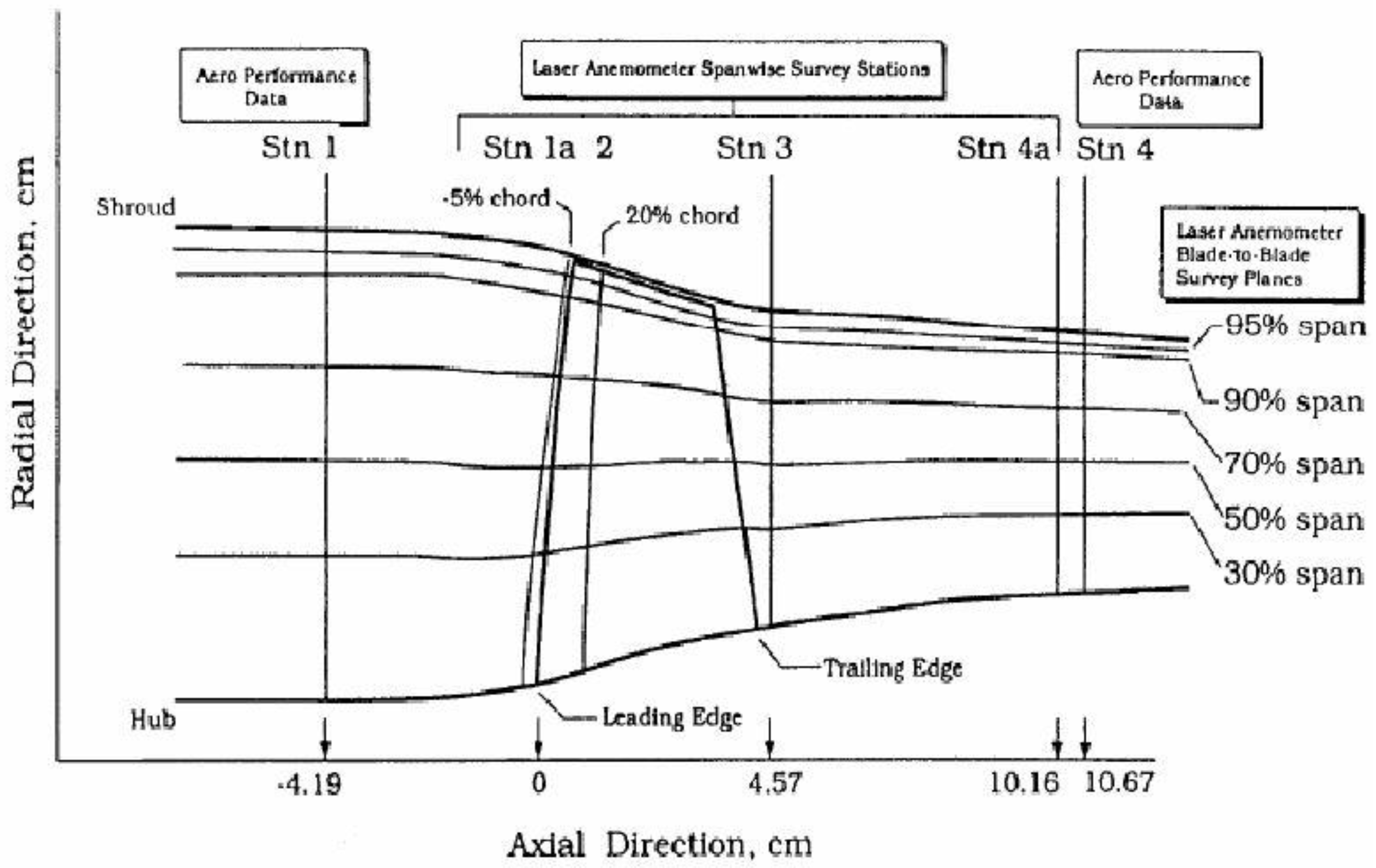
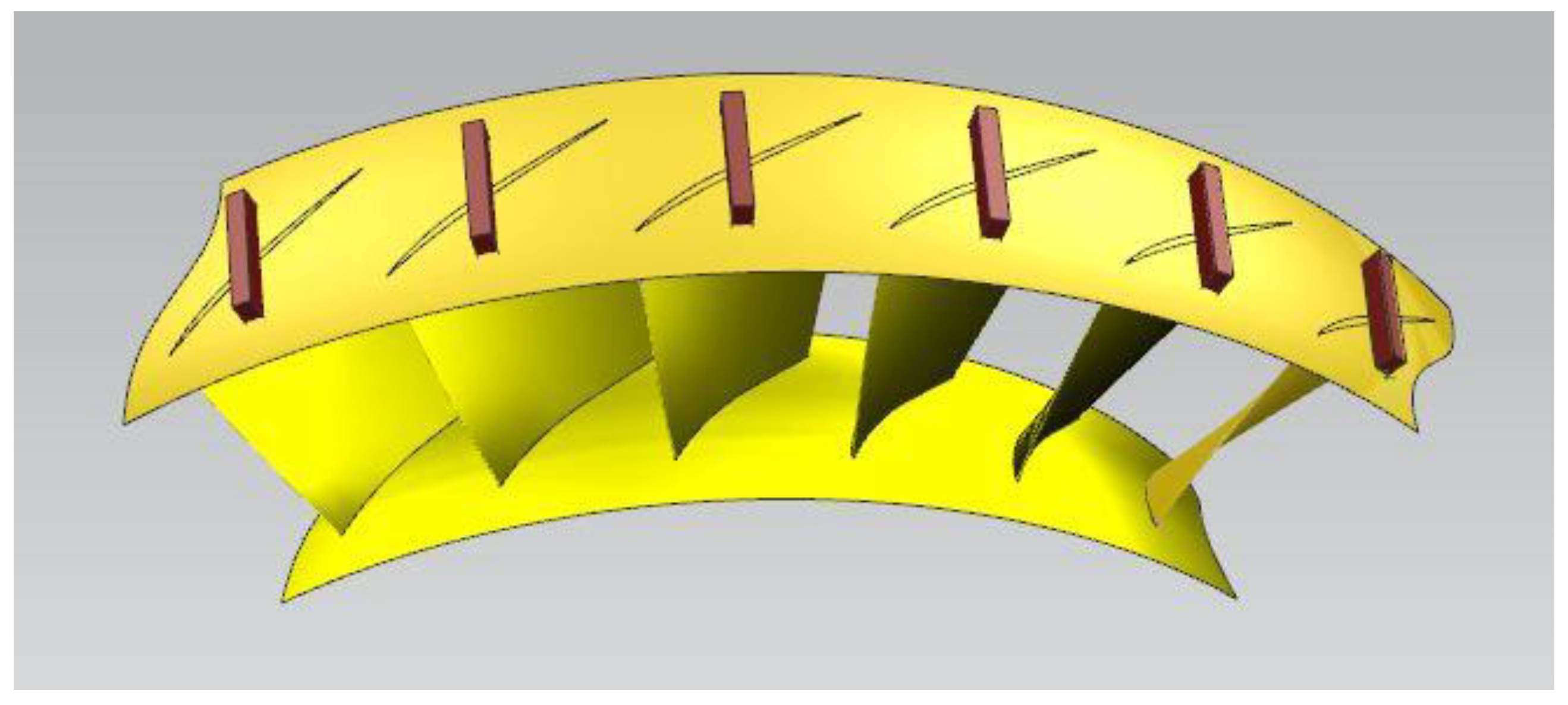


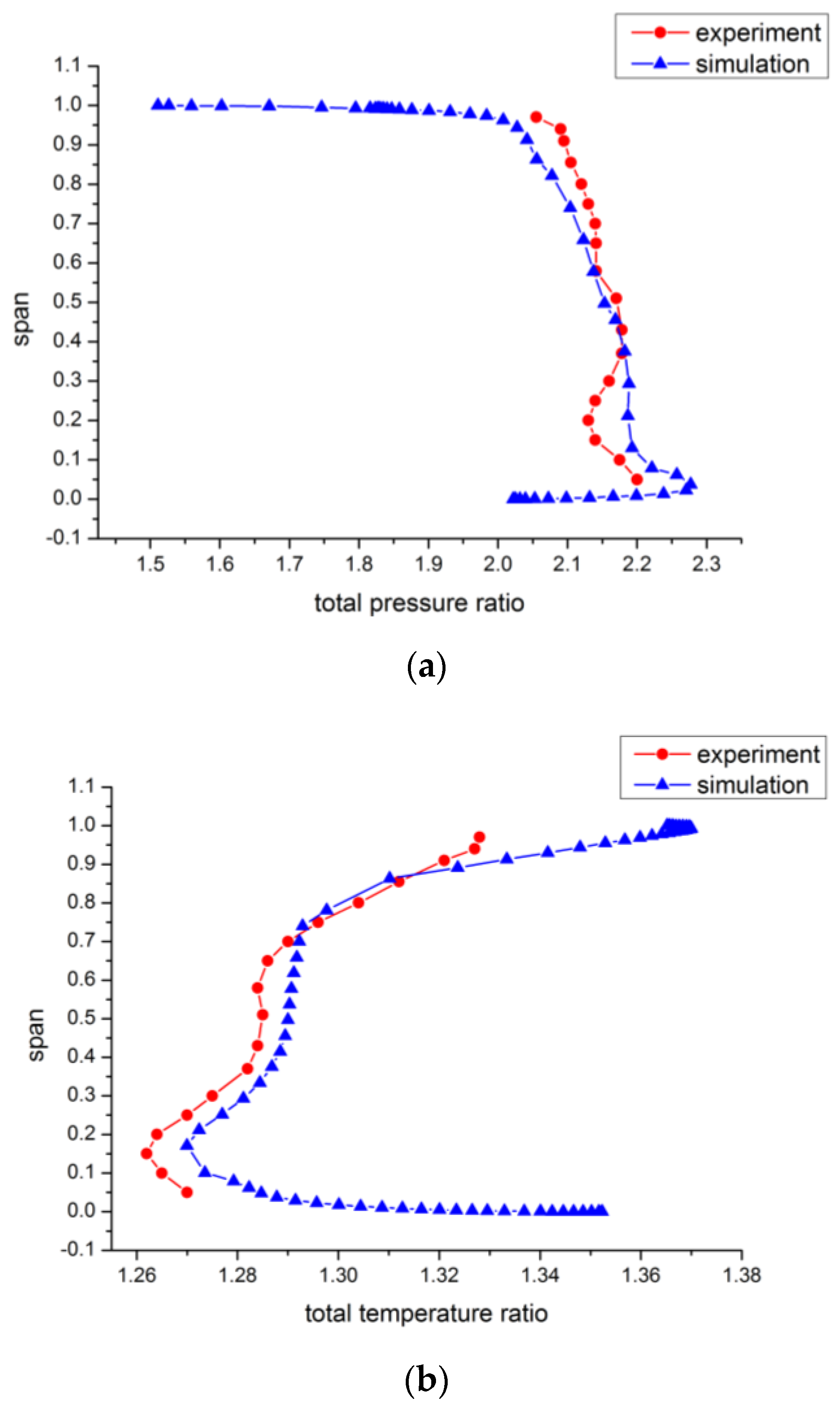
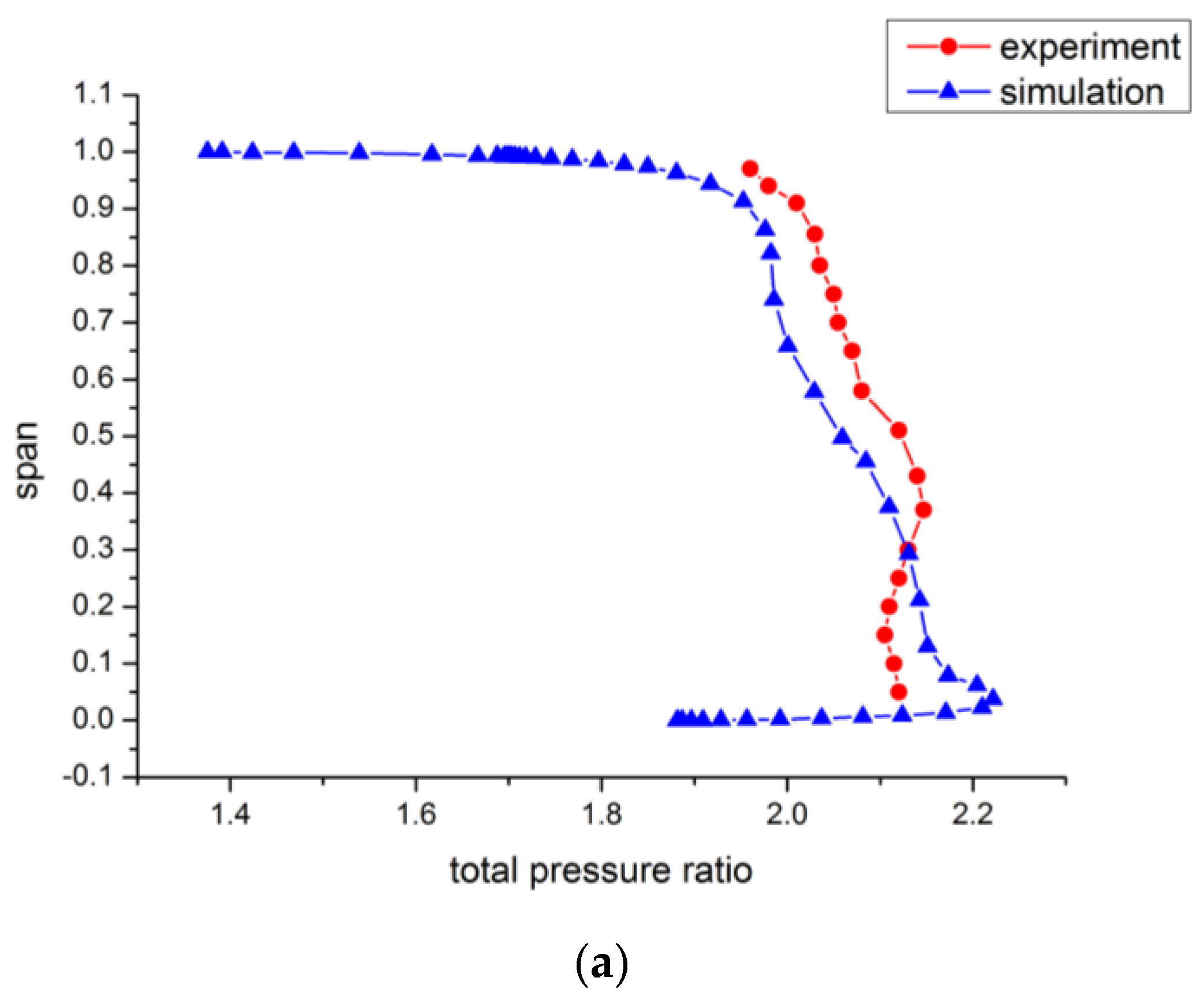

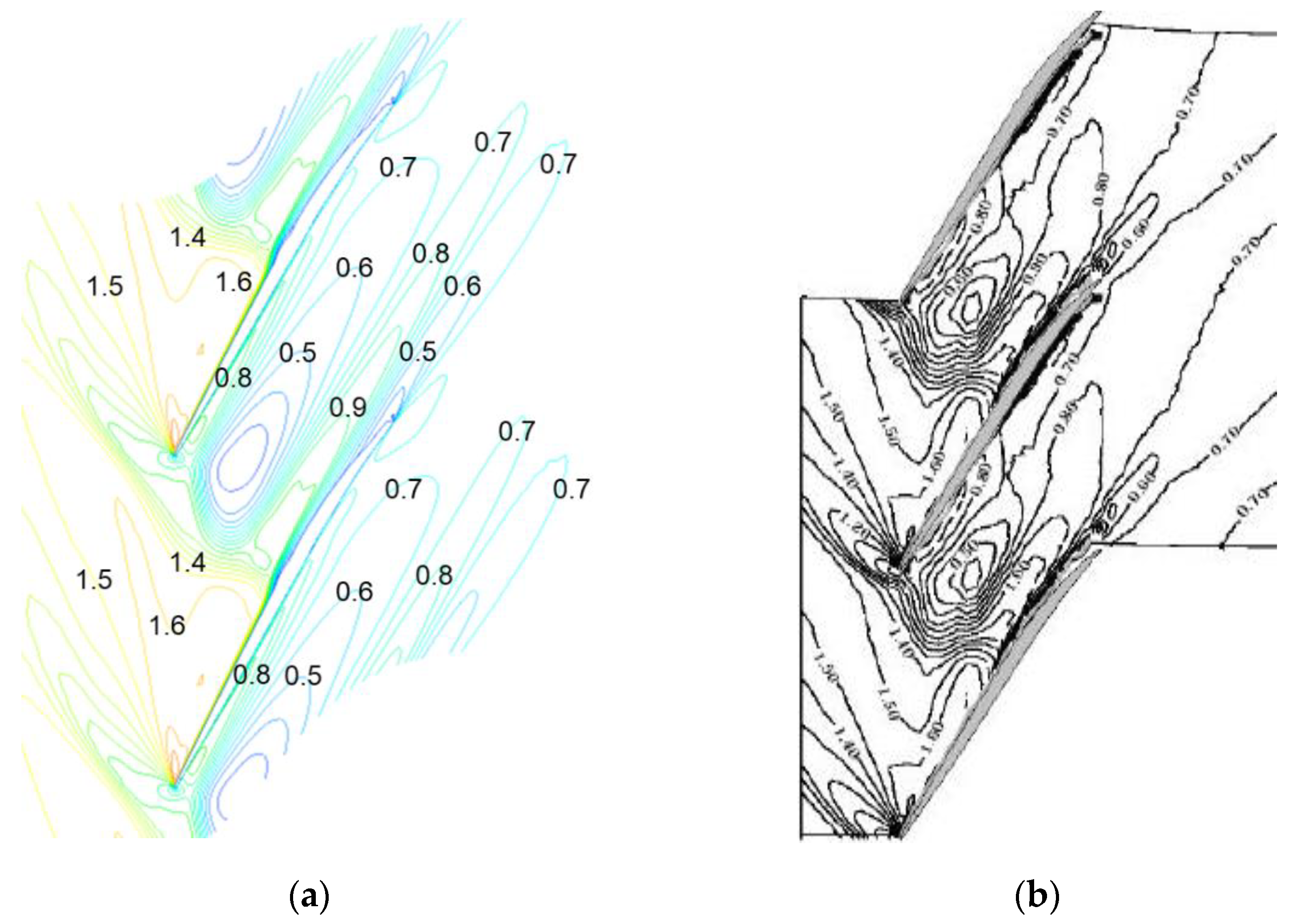
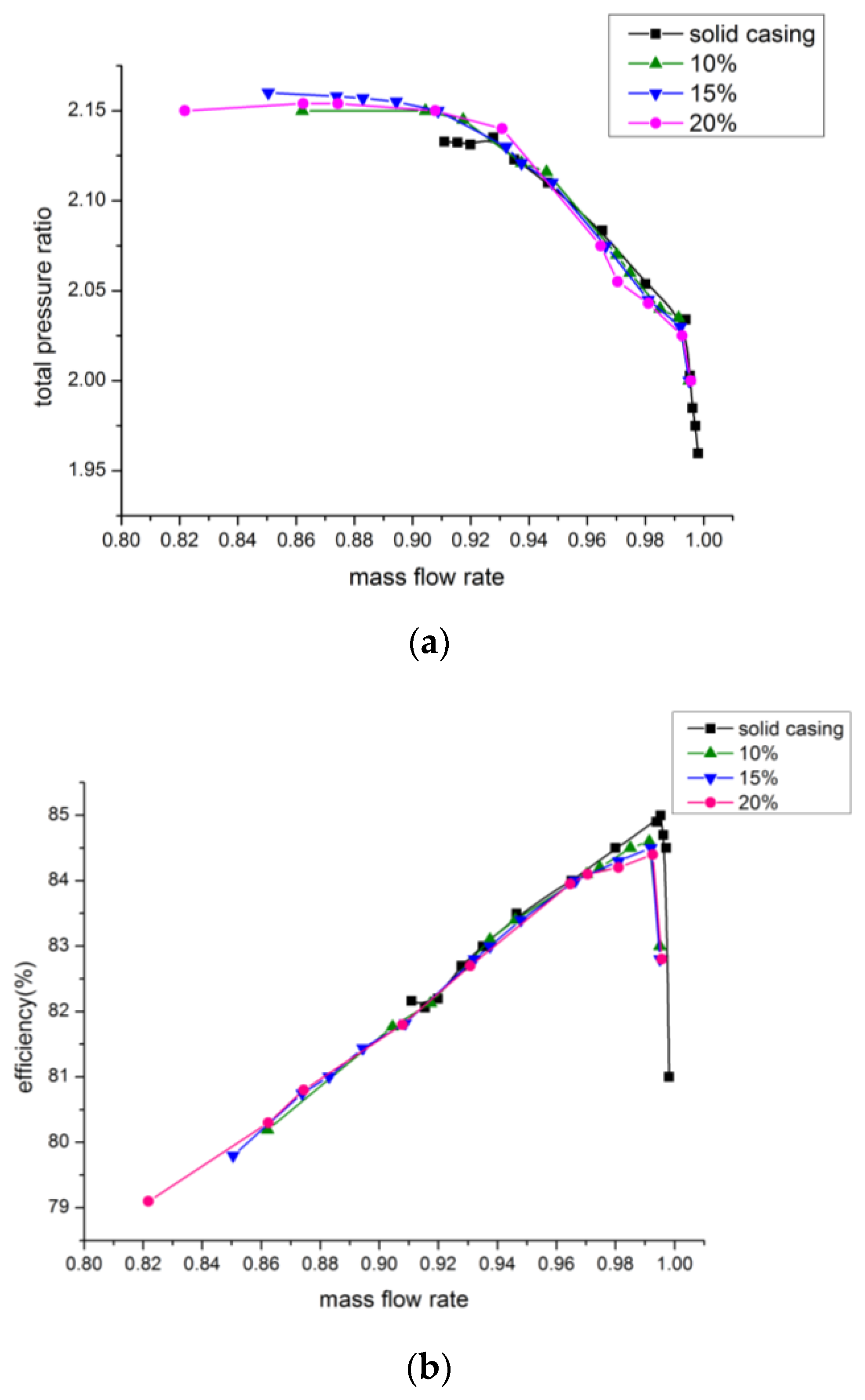

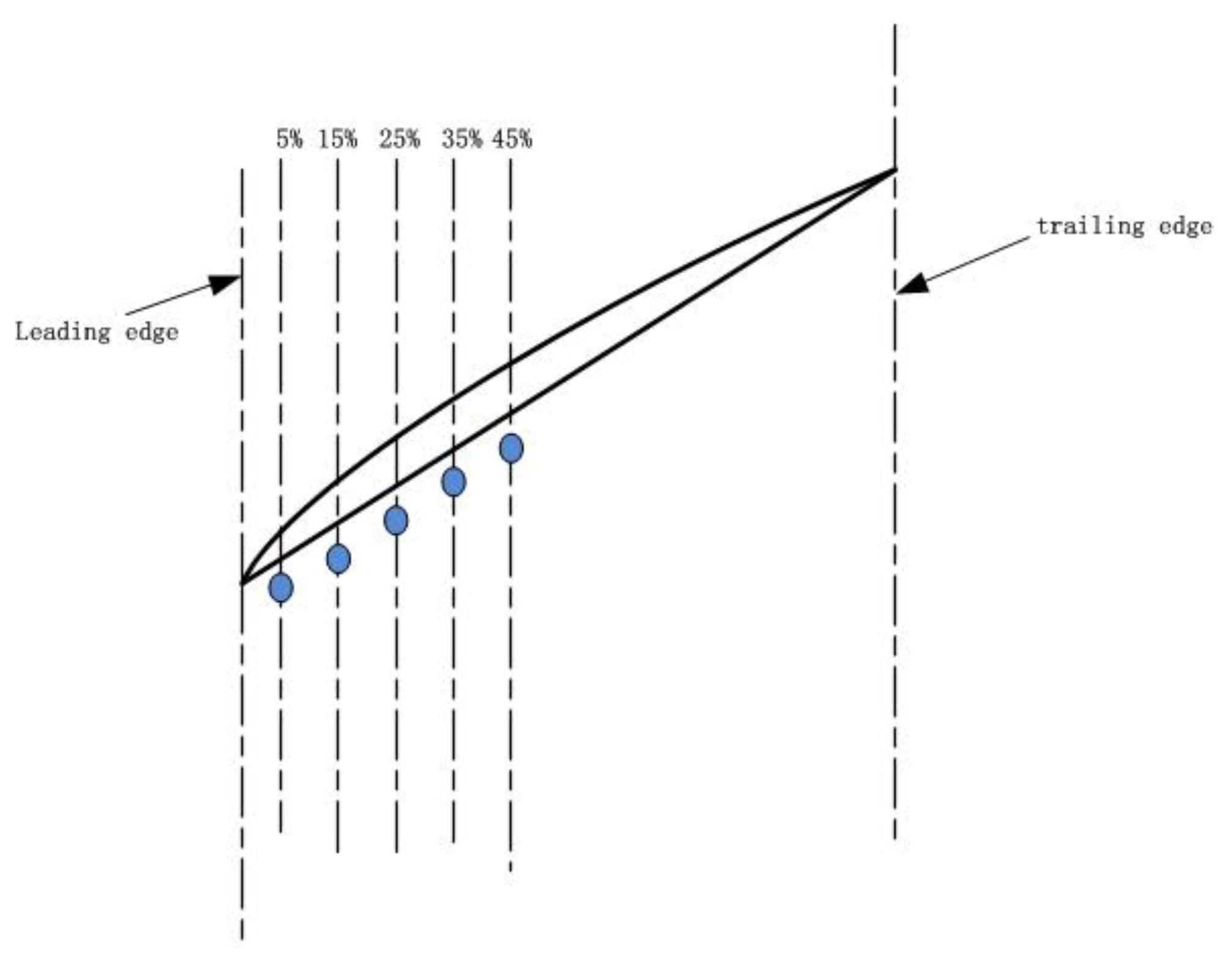
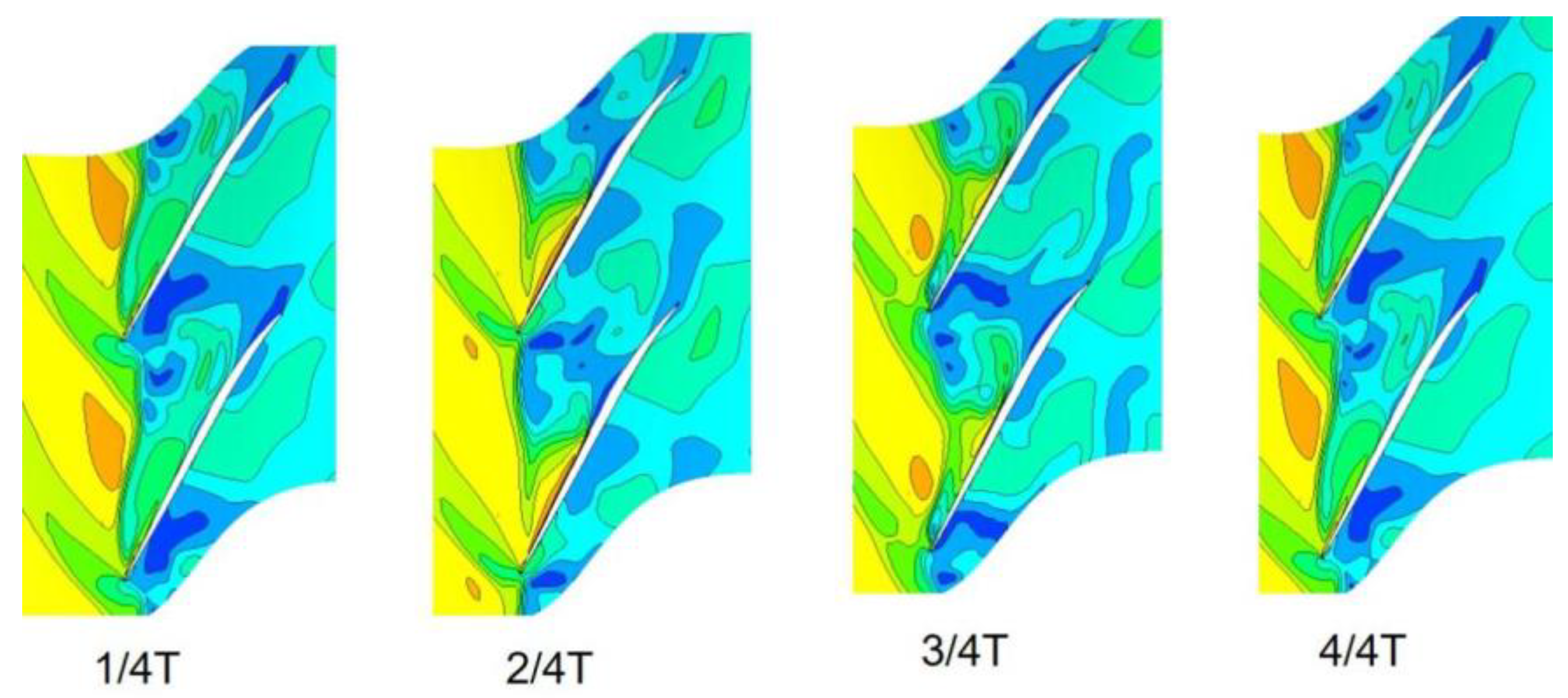
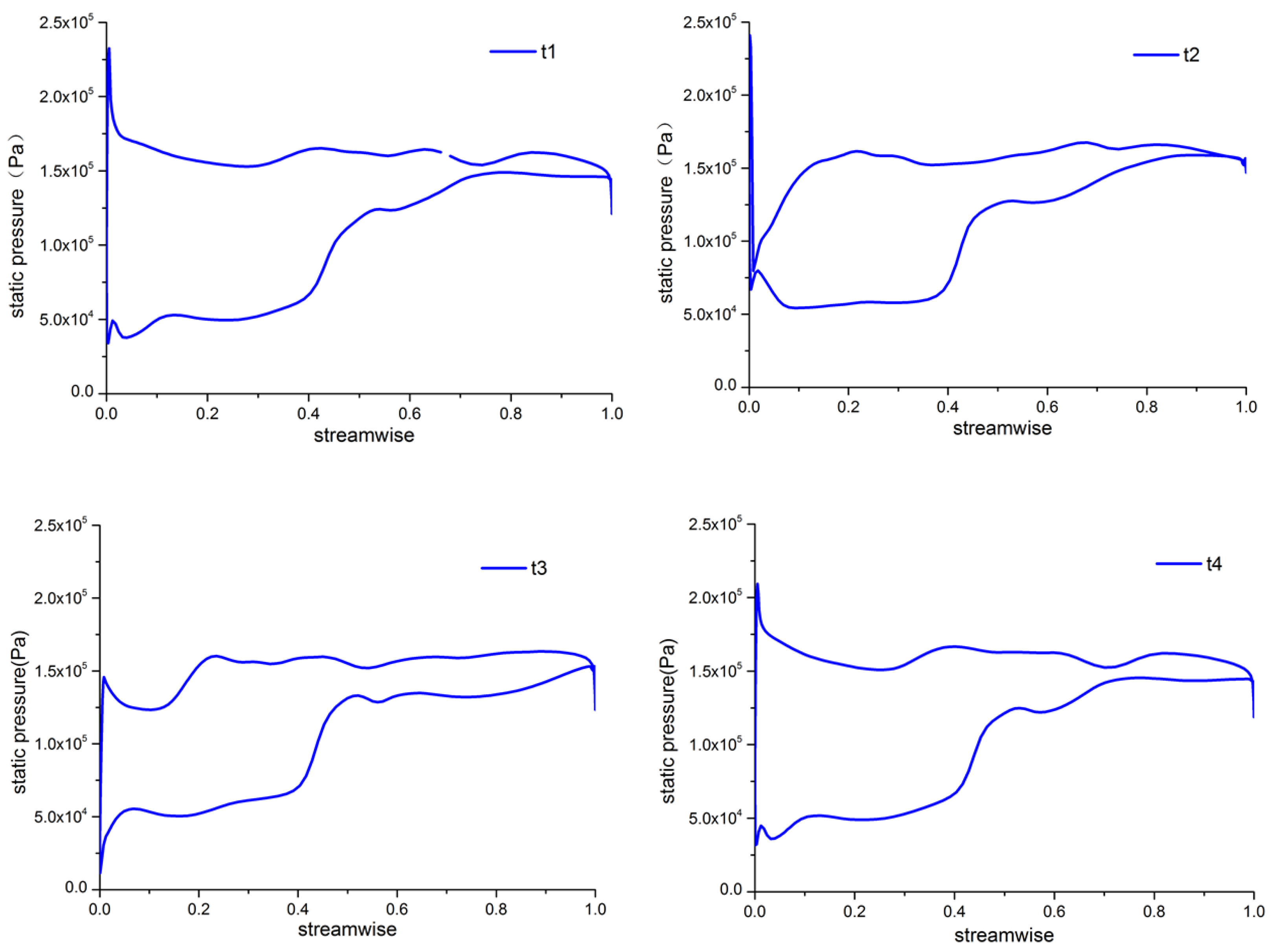
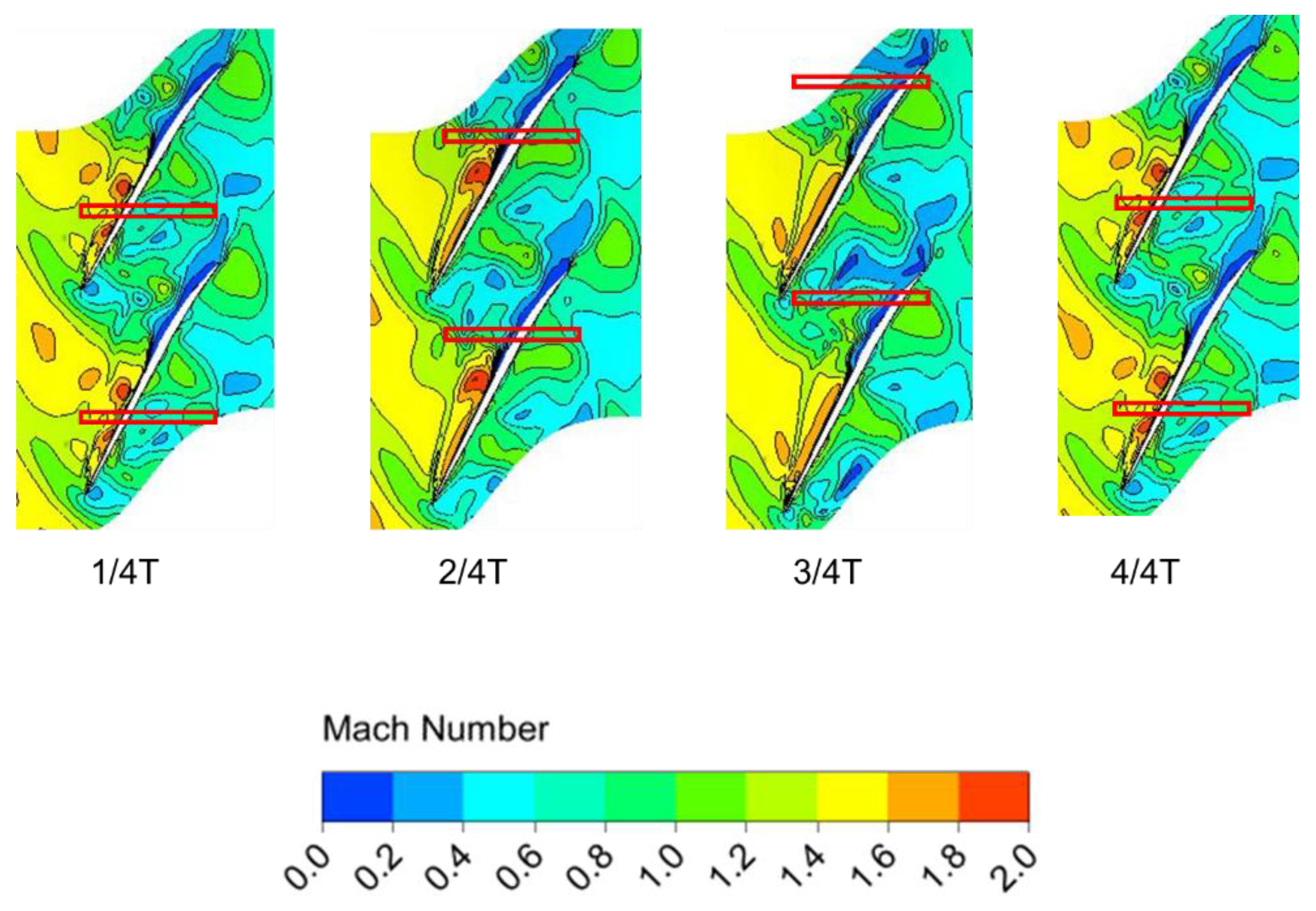
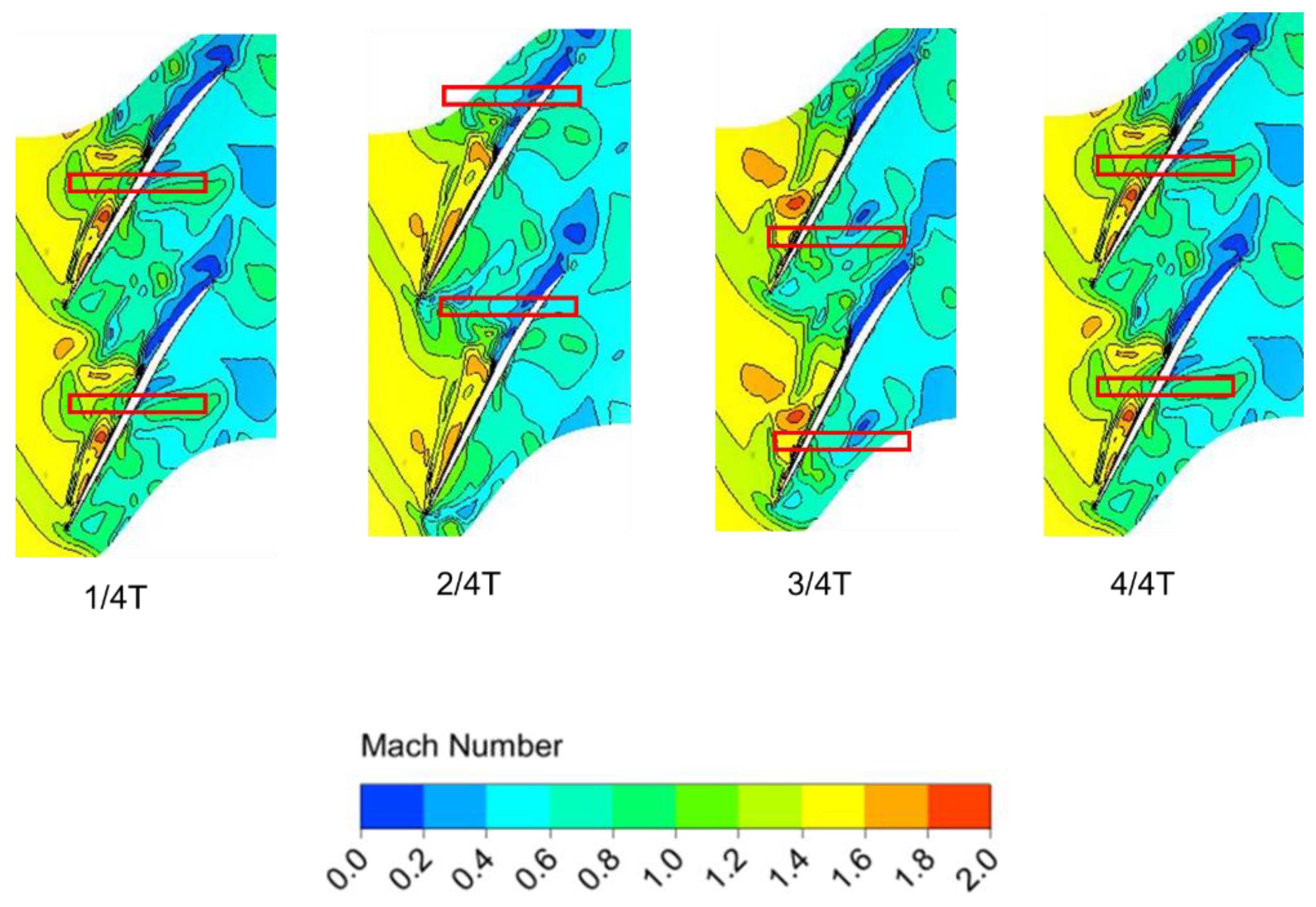
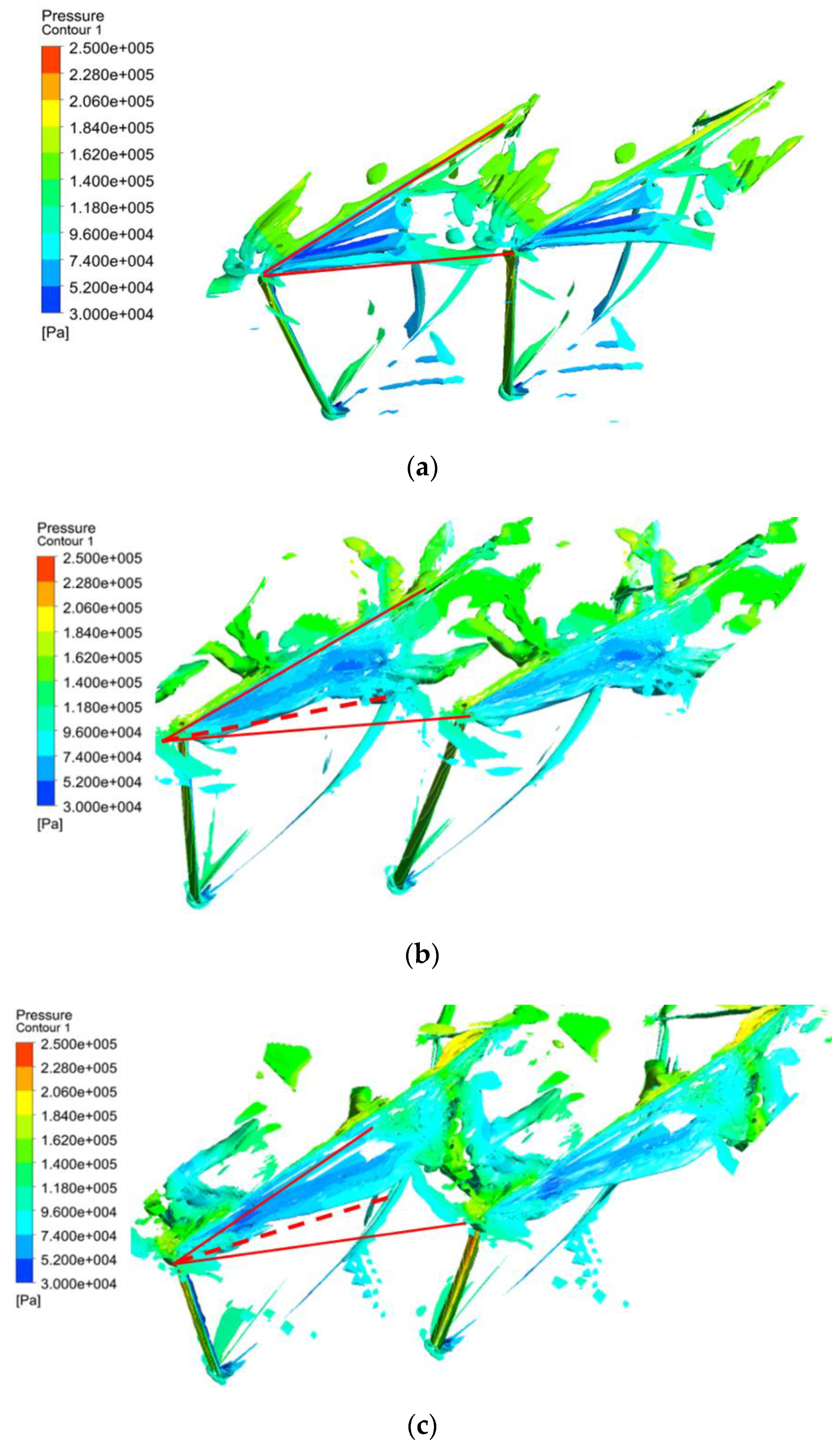
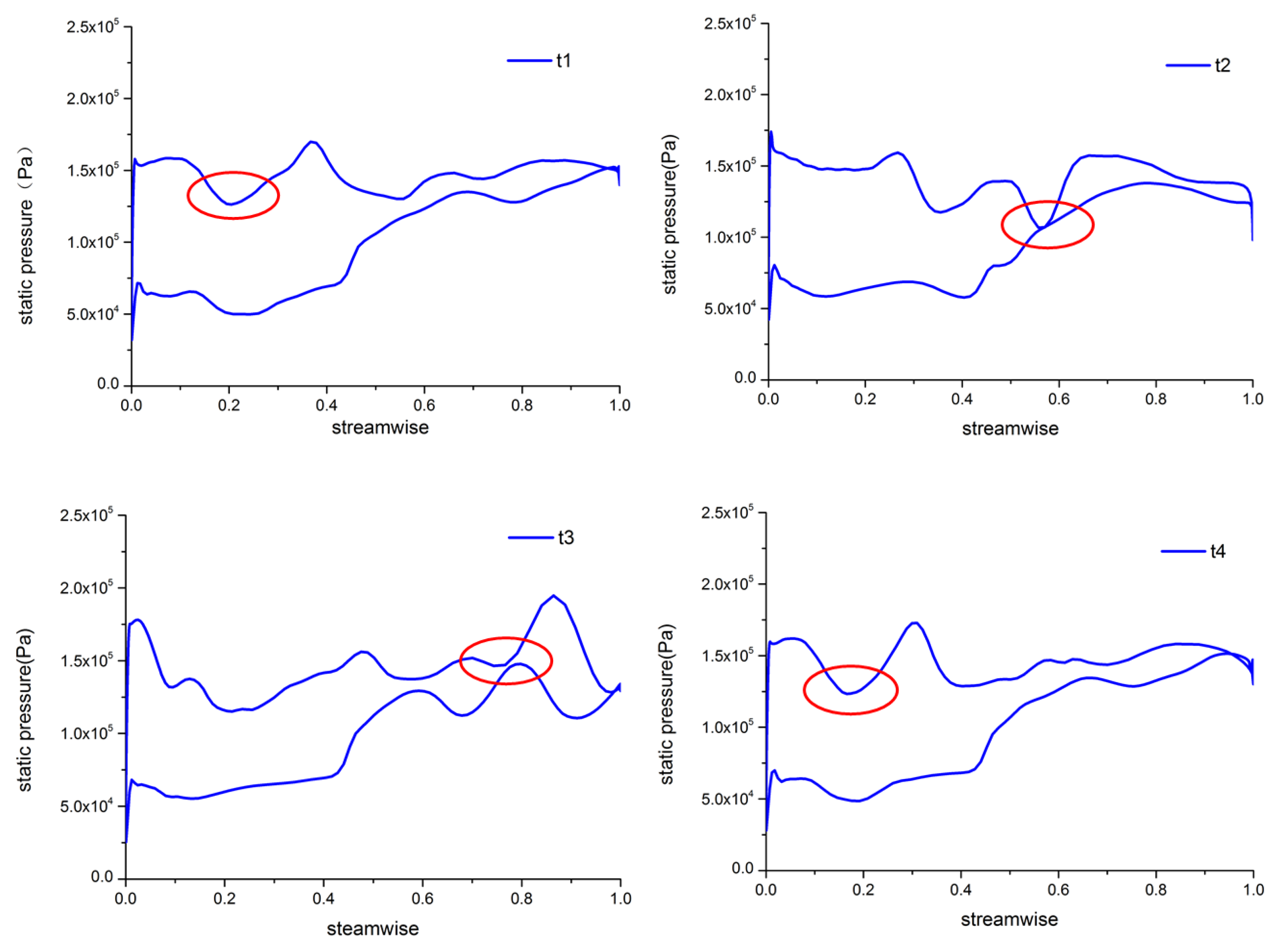


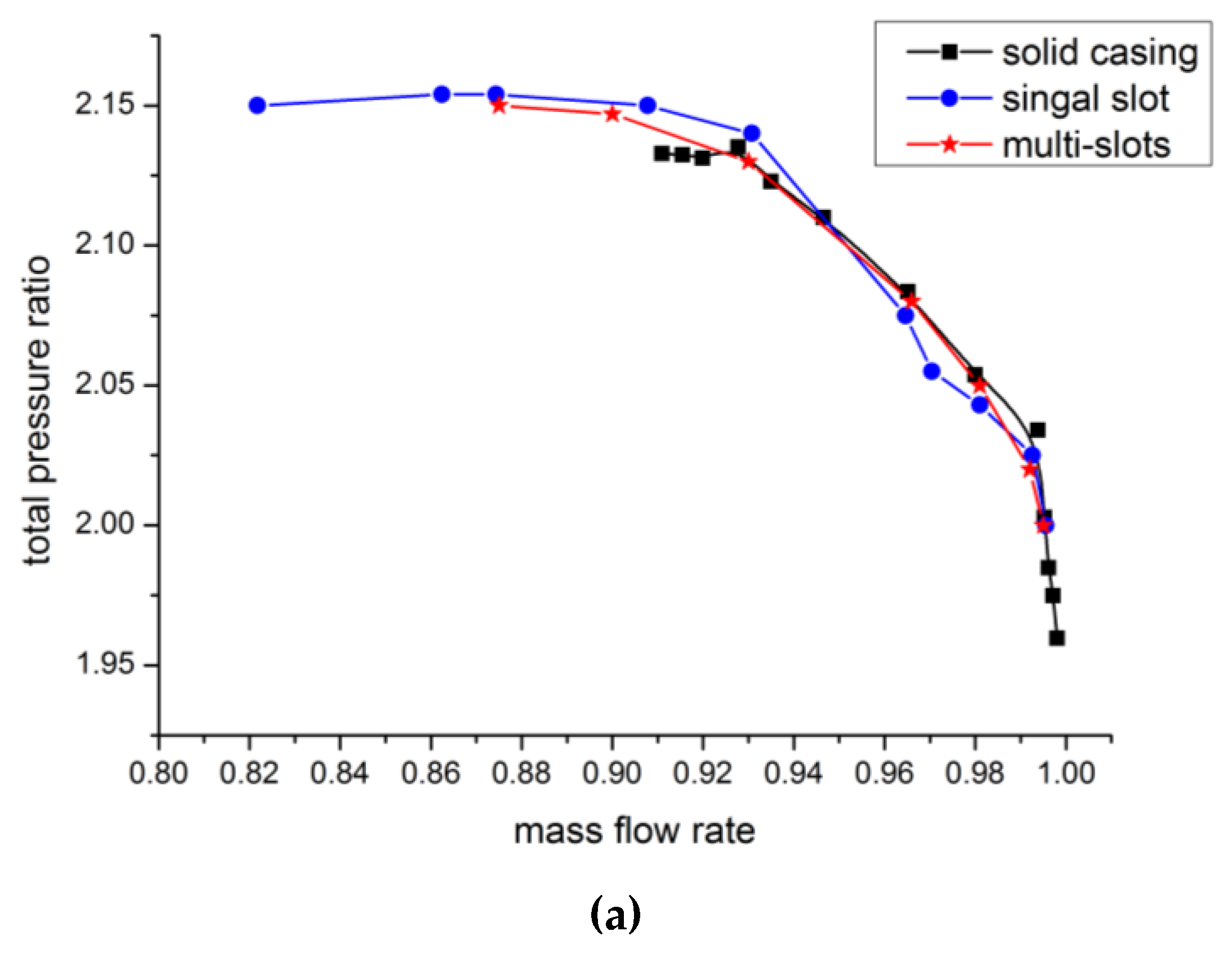

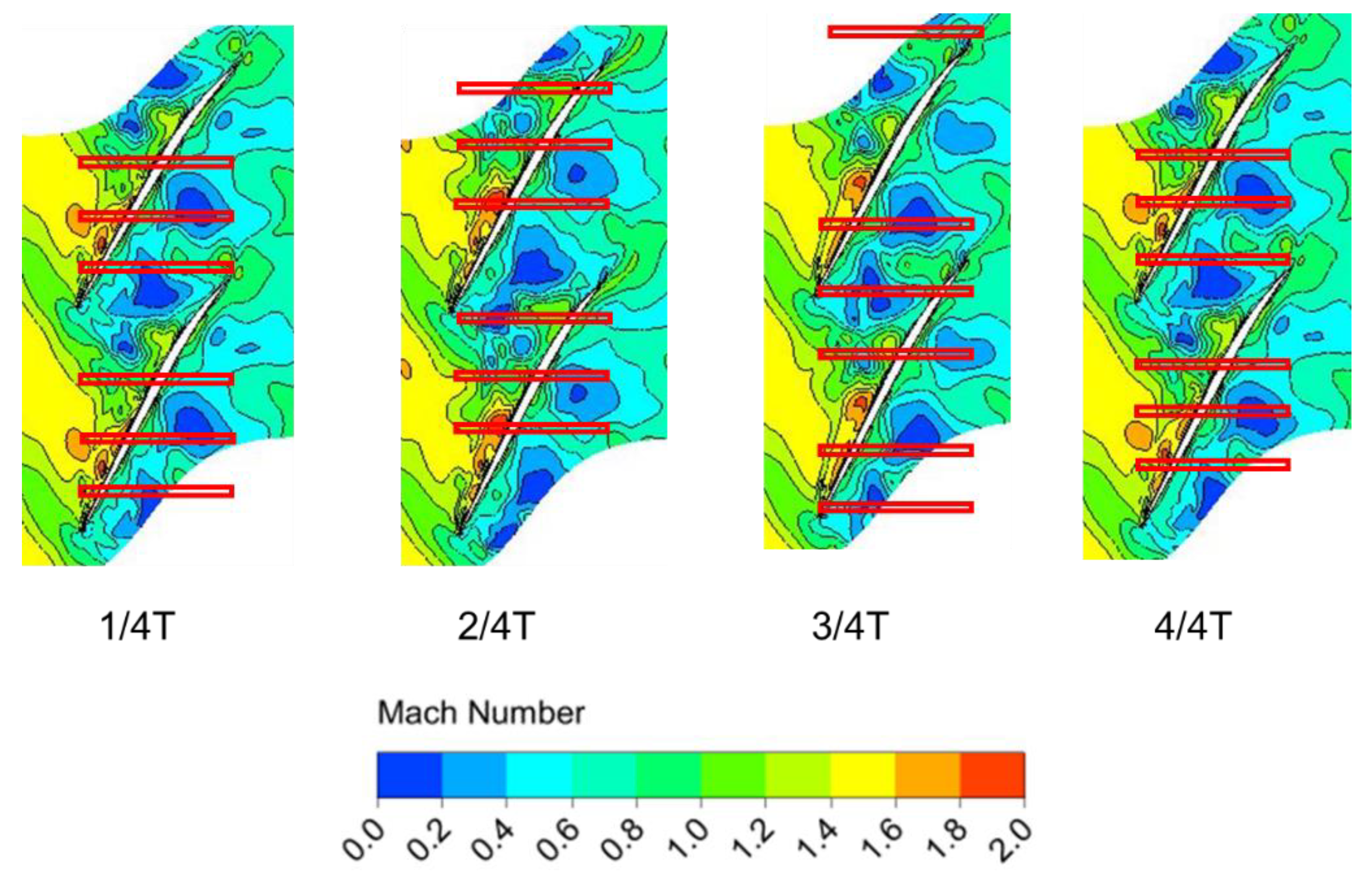
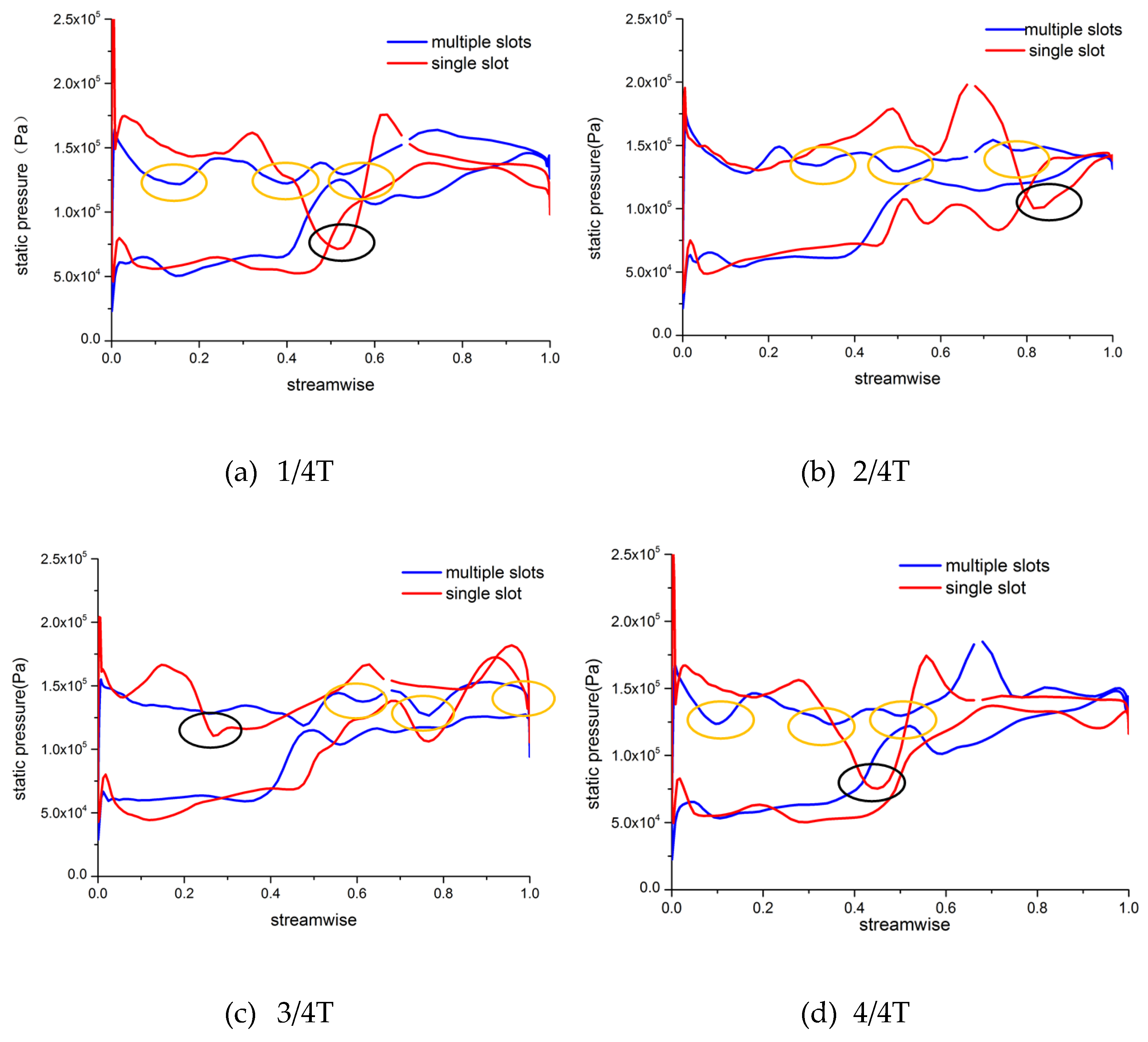
| Parameter | Value |
|---|---|
| Number of blades | 36 |
| Design speed (r/min) | 17188.7 |
| Design tip speed(m/s) | 454.14 |
| Hub/tip radius ratio | 0.7 |
| Tip solidity | 1.288 |
| Design mass flow(kg/s) | 20.188 |
| Design total pressure ratio | 2.106 |
| Design adiabatic efficiency | 0.877 |
| Slots Area Rate ε | Depth of Slots (mm) | Number of Slots Per Passage |
|---|---|---|
| 10% | 5.6 | 1 |
| 15% | 5.6 | 1 |
| 20% | 5.6 | 1 and 3 |
| Slots Area Rate ε | Stall Margin Increasement (%) | Peak Efficiency Loss (%) |
|---|---|---|
| 10% | 6.5 | 0.47 |
| 15% | 8.46 | 0.588 |
| 20% | 11.8 | 0.719 |
Publisher’s Note: MDPI stays neutral with regard to jurisdictional claims in published maps and institutional affiliations. |
© 2021 by the authors. Licensee MDPI, Basel, Switzerland. This article is an open access article distributed under the terms and conditions of the Creative Commons Attribution (CC BY) license (https://creativecommons.org/licenses/by/4.0/).
Share and Cite
Liu, Z.; Huang, G.; Musa, O. Numerical Investigation on a Axial Slot Casing Treatment of a Large Circumferential Interval and Small Opening Area. Energies 2021, 14, 6181. https://doi.org/10.3390/en14196181
Liu Z, Huang G, Musa O. Numerical Investigation on a Axial Slot Casing Treatment of a Large Circumferential Interval and Small Opening Area. Energies. 2021; 14(19):6181. https://doi.org/10.3390/en14196181
Chicago/Turabian StyleLiu, Zepeng, Guoping Huang, and Omer Musa. 2021. "Numerical Investigation on a Axial Slot Casing Treatment of a Large Circumferential Interval and Small Opening Area" Energies 14, no. 19: 6181. https://doi.org/10.3390/en14196181
APA StyleLiu, Z., Huang, G., & Musa, O. (2021). Numerical Investigation on a Axial Slot Casing Treatment of a Large Circumferential Interval and Small Opening Area. Energies, 14(19), 6181. https://doi.org/10.3390/en14196181







